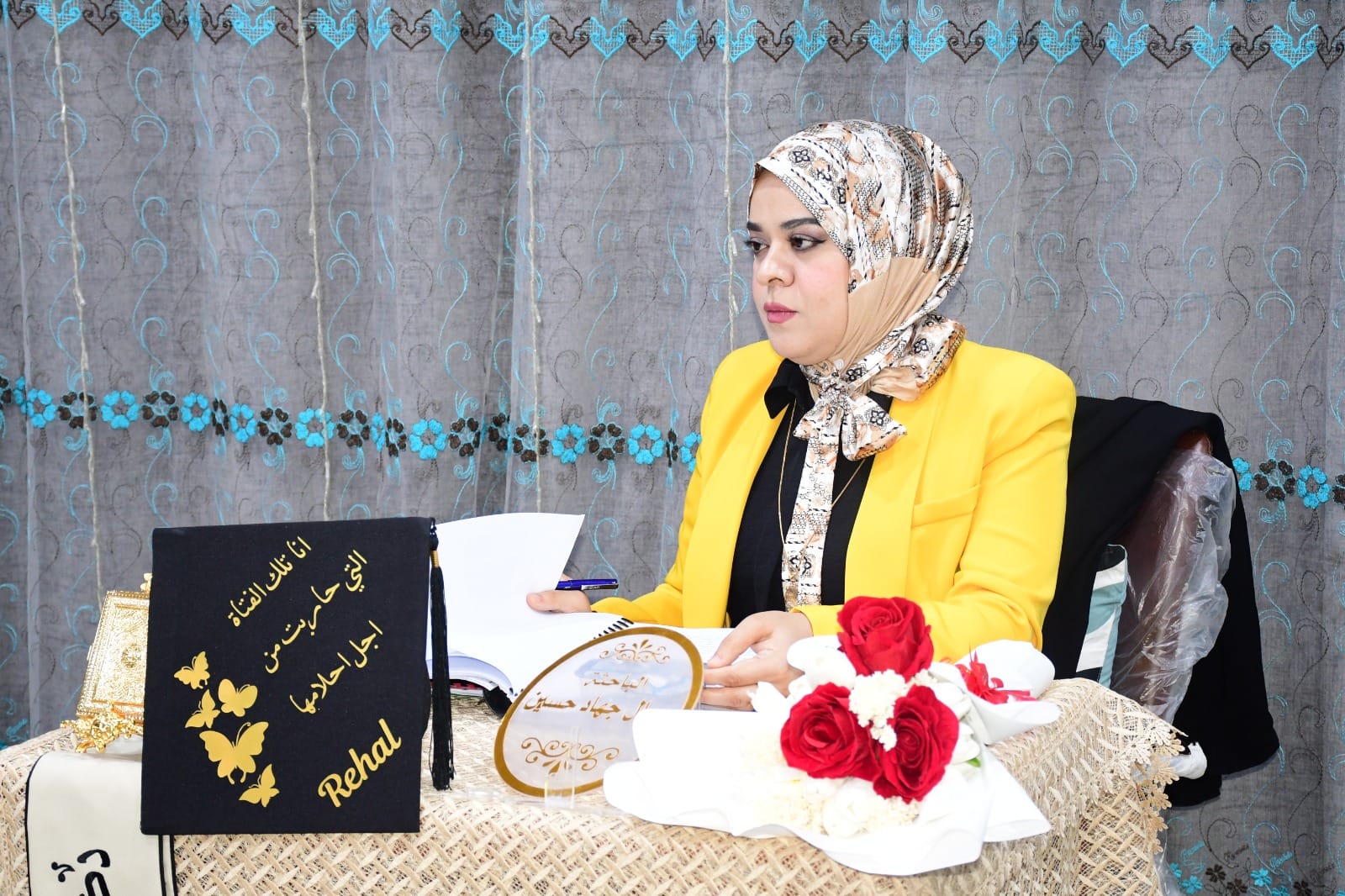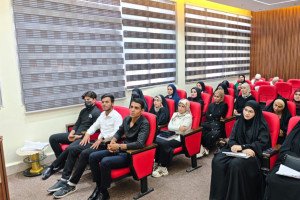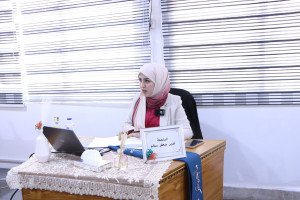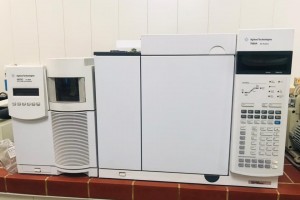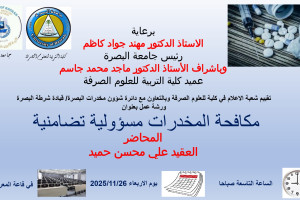
The College of Education for Pure Sciences in the Department of Life Sciences discussed a doctoral thesis on (larval stages of flukes in snails and their use as a vital indicator of water quality in water bodies in Maysan Governorate/Iraq)
The thesis presented by the researcher (Rahal Jihad Hussein) included:
In her study, she recorded nine species of freshwater snails from the Tigris River passing through Maysan Governorate...
Twenty-one species of comets parasitize in snails, including 13 species recorded for the first time in Iraq.
She also discussed in her research project the study of bioaccumulation concentrations of some heavy metals in the radiating phase, and this study is considered the first in the world.
I conducted a survey of freshwater snail species over the course of the study, which extended from March 2022 to February 28, 2023, and identified four study stations from the north, east, west, and south of Maysan Governorate, namely: (Kamit, Al-Musharrah, Al-Salam, and Qalat Saleh) in order to collect the largest number of snail species in the main bodies of water. The branch of the Tigris River passing through the governorate collected 5,019 shells, of which nine types were recorded:
It also conducted a survey of the larval stages of the two-hosted flukes parasitizing freshwater snails at the same stations, and for the duration of the study during which the snails were collected, the snail infection rates varied, and this may be due to the availability of definitive hosts infected with the flukes and their contact with the intermediate hosts. Among the 5019 snails that were collected, four types of them were found to be infected. Only: R.auricularia, P.acuta, and M. tuberculate and Melanopsis spp. An infection rate of 44.5%, 16%, 26.5%, and 13%, respectively. He identified 21 types of binary comets belonging to 12 families, namely:
Because the accumulation of heavy elements in the water environment has become a global problem due to their ability to accumulate to dangerous levels without any tangible indicators indicating their accumulation and their ability to cause severe damage to aquatic organisms. Measuring the accumulation of some heavy elements (lead, nickel, zinc, copper and cadmium) in the sediments and tissues of the M.tuberculatus shell. Because the study of the bioaccumulation of heavy metals in the larval stages of parasitic flukes in their central hosts is almost non-existent in the Middle East and around the world, the iridia stage of Parapleurolophocercous II, which is housed by the conch used in the study, was used in the current study. The study adopted three stations from the same conch collection stations, namely (the dissection (Al-Salam and Qalat Saleh), heavy elements were extracted from the study samples using centrifugation, chemical acids, and heating, and the concentrations of the elements were estimated using a Flame Atomic Absorption Spectrophotometer (FAAS). The results were analyzed statistically and significant differences were found at the probability level p ≤ 0.05 between most of the heavy elements in the three study stations. The stages of the redia recorded cumulative concentrations of elements higher than their concentrations in the conch tissues and in all stations, and the Al-Musharrah station recorded the highest concentrations of all the elements studied except for cadmium below the level Probability P≤ 0.05.
